

ORREFORS
Design, style and history
by Maria LantzThe history of Orrefors is a fascinating story of how world-class craftsmanship and excellence have emerged from deep within the southern Swedish forests. It is also a story of people, their dreams and struggles, and of how nature, technology and culture interact in the effort to achieve the perfect result: light, heavy, clear, reflective, opaque and sheer glass.
The beauty and quality of glass is continuously reviewed, improved and refined – and the possibilities are endless. This glass is far from a final chapter, and its history is being written in this very moment.
A melting pot
How did Orrefors achieve such renown all over the world? How could glass be so advanced here – so far north, in the heart of the lush, green forest?
To understand, we must look back in time. The foundation was laid in eighteenth- and nineteenth century Småland: innovations in glass manufacturing, international contacts, social and political movements… all of these elements are part of the glassworks’ history, and so is the arrival of the artists in the twentieth century. Without them, Orrefors would not have been able to keep up with the competition or become the success it continues to be today. But the roots go deeper still. The glass we call “Swedish” is a fascinating result of relationships with people, with a faraway world, and with the local area, where nature is playing a key role.
Glass moves north – 13th century
In Venice, knowledge of glass came from Constantinople, Italy and Spain. They found that the sand in the Po river could be used for manufacturing and for a long time, Venice was the capital city of European glass, together with Bohemia, Germany. Glass objects became important export products for both cities. Obtaining completely clear glass was still difficult, but when successful, people could make perfect mirrors, which were used
Orrefors
as objects and to furnish homes. Indeed, glass seemed to exist in a realm adjacent to alchemy – imagine creating something so remarkable out of almost nothing!
Glass production in Sweden developed surprisingly early, given the country’s peripheral location relative to the center of glassmaking knowledge to the south. Or perhaps that is precisely why it happened – in Sweden, people with this knowledge had the opportunity to develop it. As early as the Middle Ages, window glass for churches and monasteries was made locally. It was likely glassmakers from the Netherlands who brought this newly acquired knowledge to the north and found a market where numerous churches were being built.
Glass for the king – 16th century
The decision to replace wooden cups with glass drinkware at the Three Crowns castle in Stockholm is often ascribed to Gustav Vasa, who also furnished all the royal palaces with window glass. Imported goods were used at first, and then two Italian glaziers set up production in Stockholm in the early sixteenth century, in order to secure access. At this point, the glass still wasn’t as artistically inclined as it was in the European glass centers – but it had definitely found its way to Sweden. And the forest is what made its production possible, because even though the individual components of glass are inexpensive, vast quantities of energy are required to manufacture it. Thus, countries like England and Ireland did not establish any sizable glass production factories domestically before coal and Industrialism, due quite simply to the lack of forest. In some cases, glass production was even prohibited there.
New ideas – entering the 20th century
Industrialism was moving through the country full speed ahead, and consumption of goods was spreading from society’s upper classes to more and more people. Fueling the production process were forests and hydropower. The raw materials comprised everything available: wool, flax, wood, metal,
clay – and lime, soda and sand for glass. As an industrial product, glass became a significant part of modernity. Public schools, studies, public discussion and health and medical care were all being established – kerosene lamps were suddenly needed everywhere. Glass served an important role in health and medical care for another reason as well: laboratory glass and thermometers, test tubes and microscope lenses – glass is essential to all scientific achievements.
Many people were giddy with faith in the future, but at the same time, that created conflicts, which Johan Ekman, the owner of Orrefors Glassworks, and Albert Ahlin, director of the pulp mill, knew. A lot of bold, foolhardy and brilliant ideas saw the light of day only to leave inventors and investors destitute. Modernity also brought poverty, misery and war to Europe. With industrialism, a proletariat had emerged – a working class that provided cheap labor, but that was also in distress. Large groups of people emigrated from Småland to America; others began to organize. There were agitators and preachers, but also discussions, social life and the daily struggle for a better living. How could all of these contradictory wants and needs be united and defined in Orrefors?
The artists arrive – 1910s
Glass had evolved and was hotter than ever when Albert Ahlin, then director of the cellulose factory, entered the world of glass production in the early-twentieth century. But what would Orrefors’ niche be? Ahlin was likely inspired by the intellectual tides of the day. And he knew that he needed help. Through personal contacts, the artist Simon Gate, who had trained at what are now the University of Arts, Crafts & Design and the Royal Institute of Art, came to Orrefors as an aesthetics consultant. Gate was a drawer and painter, but he had never worked with glass. However, like so many others, he was fascinated by the material and its possibilities. He was hired as artistic director in 1916. Gate’s aesthetic manifested first in the detailed engraved patterns on glass and gradually in complex
 Above: John Selbing’s iconic photography for Orrefors.
Above: John Selbing’s iconic photography for Orrefors.

shapes in layered glass. A year later, another artist was hired: Edward Hald, a former student of Matisse in Paris. The two artists were different, but they brought renewal to the forms and patterns of glass in parallel with one another. Incredibly skilled engravers and glassblowers were now working at the glassworks to implement Gate and Hald’s visions.
The boom of art glass – 1925
Swedish art glass was now unsurpassed. More artists, designers and engravers became involved: Bergkvist, Abels, Augustsson. Kåge, Milles, Grünewald. They won international awards, but they were not just making magnificent exhibition objects and expensive collections. Gate, Hald and the others were also designing sets and drinkware for new target groups, as well as simpler everyday objects based on the motto: more beautiful everyday goods. These items were also successful exports and soon, Orrefors had sales agents in South Africa, the US, Australia and all over Europe.
The artists had an undeniable social impact at the glassworks. From the café scenes and bohemian lifestyles of major European cities, they brought curiosity, open good-naturedness, renewed forms of socializing, and a willingness to question conventions. For example, when Gate and Hald formed the Club for the Outstretched Hand. In the club, management and staff members came together to discuss ideas, worldviews and the possibilities of glass in festive yet unconstrained social gatherings. That would have been impossible in the hierarchical factory setting just a few years earlier. Women were still very much in the minority, even if they were there – both in the production and its surroundings. One of them was Flory Keiller. She had studied art in Paris and now she worked at the glassworks as a glass engraver. In 1929, she married Simon Gate, and she would later become a pioneer in ecology.
War and unrest – 1930
The Depression had arrived and Orrefors had to carefully review its offering and manufacturing. They held sales and clearance sales; the only truly profitable product was glass for display cabinets. And then it was time for the Stockholm Exhibition of 1930. Many people thought that perhaps Orrefors glass had reached the end of the road. Style ideals were undergoing radical change, and product and fashion design were influenced by austere functionalist architecture. How would the artists find equilibrium in the face of this trend?
In the shadow of economic downturn, new experiments took place with new artists who joined the company. Gate and Hald were still there, but Edvin Palmkvist, the sculptor Edvin Öhrström and Vicke Lindstrand were continuing to work with new colors and shapes. Soon, the techniques known as graal and ariel had been fully developed: layers of glass were applied on top of one another with air sealed in between. This allowed the glass
itself to shine, with engraving and patterns inside of it. Once again at the Stockholm Exhibition, audiences were abuzz – visitors and critics alike.
But the magnificent exhibitions and awards were not enough when the economic downturn deepened during World War II. Workers were let go, Palmkvist went to Stockholm for continued studies at the University of Arts, Crafts & Design, and Vicke Lindstrand left the glassworks. Hald became head of Orrefors and had a lot on his plate; many people needed his help. When many men are summoned to go to war and materials are in short supply, good advice isn’t cheap. Hald decided to bide his time while continuing to focus on the future. Orrefors needed documentation and marketing in the form of photos and advertising.
Peace and generational change – 1930-40
In 1932, Hald’s newly hired assistant Johan Selbing was given a new assignment as photographer for the glassworks. Selbing’s goal was to design his own products, which he ultimately ended up doing. But for now, he was the photographer. And before long, he was so successful that his pictures were shown at exhibitions and won prizes. Selbing gradually also developed a technique in which photos were transferred to glass and then etched.
1940 was a difficult year. The war had depleted all resources. The production of glass panels for display cabinets continued, but buyers were not prioritizing other products. Gate was exhausted, and when he turned 60 in 1943, he decided to step down as head of the company and work only as artistic director. But two years later, Gate suddenly died, and Hald – who was also over 60 at this point – was left on his own. And then there was a miracle: peace was declared, and orders for glass objects began pouring in almost immediately. When American troops were leaving Germany, they wanted to bring home souvenirs from Europe. The reputation of beautiful Swedish glass lived on and “something from Orrefors” was at the top of many wish lists.
In the aftermath of the war, refugees arrived in Sweden and many found their way to industrial areas. Among others, Sudeten German refugees from Czechoslovakia – a country with a lengthy glass tradition – came to Orrefors. And they were needed, because consumers were also emerging on the home front. Orrefors also hired more new designers: Ingeborg Lundin, Nils Landgren, Gunnar Cyrén and Carl Fagerlund, all of whom had different styles as well as an ability to move seamlessly between art glass, industrial products, and products for public spaces.
New owners – 1950s Ownership was transferred to the Beyer family and soon,
the Beyer son, Johan, took over as the new director. The glassworks employees had renewed faith in the future, which was evident not only in the glass, but also in the architecture and surroundings. Johan Beyer had the old houses fixed up and personal homes built; he made sure gardens were tended and that the factory was modernized. In accordance with the law, workers were granted three weeks of vacation in 1951. With improved personal finances and time off, another wave of consumption arrived as the glass industry benefited from an interest in gifts. Selbing’s photo glass was a popular souvenir, earning large quantities of money for several years. Orrefors seemed to be stable.
A generational change had taken place among the artists and now, no one had overarching responsibility for artistic development. But the new designers enthusiastically experimented and tried new things. Danish Henning Koppel, who was Jewish, contacted Orrefors when he fled Denmark while it was occupied by Germany, and he joined the designers for a period of time. He pushed himself and the limits of glass with his elegant patterns and shapes, in which the glass appeared to be billowing. “Glass has its limits. I want to get as close to them as possible.” Eva Englund developed the graal technique, which incorporates colors and patterns within the glass, in her bowls and vases. Ingeborg Lundin’s cut-crystal set quickly became a classic. And then came the next challenge: increasingly stiff competition from the rest of the world.
Shifting focus – 1970s
Glass originally came to Småland through knowledge from afar. Now, as the world was opening up, aesthetics and expertise emanated from the Kingdom of Crystal. This was especially thanks to the glass school in Nybro that Beyer started, which had developed a reputation around the world. Copies of Orreforsstyle glass had begun to pop up in the US already in the 30s, but now there were variations of essentially every product in circulation, made in countries with competent glass industries, but where lower pay resulted in cheaper goods for consumers. How would Orrefors handle this new situation? Broaden the selection, or narrow it down? Enhance or streamline?
In the 70s, Johan Beyer needed support to face these challenges, which he received through the Wallenberg Group. They came in as partners first, eventually becoming majority shareholders. At this point, marketing and the ongoing recruitment of designers were both focused on increased sales.
Closing the circle – 1990-2020
Moving forward to 1990, the glassworks
group Orrefors
Kosta Boda was established to take advantage of synergies between multiple glassworks in Småland. New owners were brought in again: Orrefors Kosta Boda AB has been owned by New Wave Group AB since 2005. At this point, the assortment began to be refined and specialized. New products were
made for a target audience of conscientious private buyers, restaurants and businesses with high standards for excellent and sustainable design.
Most glassworks in Sweden have cooled down now, while the country still generates knowledge of glass at art schools and through internships in production. This allows Orrefors to continuously welcome new designers who began working with glass early in their artistic careers, and who can thus work closely with production.
Orrefors’ glass products are now made at a single location in Sweden: the Kosta glassworks, where designers, glassblowers, grinders, painters, glass cutters and inspectors take part daily in the craftsmanship of production at the glassworks, which has around 150 employees. Orrefors also produces products in other countries at glassworks that were once predecessors to the glass of Småland, offshoots in some cases, and often, former competitors. Now they have become partners instead. Lessons, thoughts and ideas are exchanged once again across national borders and between continents – indeed, the same way that glass has always traveled: via trade routes, through people’s knowledge, and with curiosity and a love for glass as a basis for the resulting products.
The future
Orrefors’ history involves complex connections and the interaction and leveraging of ideas. Sometimes, this has meant random events, and bold ideas have often blossomed and occasionally failed. Stubbornness and dedication are the common threads. The forest has provided a key condition, and represents the ways in which glass, nature and society are connected and have evolved side by side in social and ecological interactions. The growth rings of the trees bear witness to the hard work, to the financiers who invested, and to the artists who made waves and brought vitality. Quality, generosity and curiosity are keywords in the history of Orrefors. Today, this is apparent through designers like Ingegerd Råman, who designs glass products with the utmost precision, or Claesson Koivisto Rune, a team that allows each item to be unique.
Glass is a material that is full of contradictions. It can be fluid and firm, hot and cold, soft and hard. Simple and complicated. It can be difficult to tame, but unbelievably beautiful when the artist and glassblower both succeed. The history and future of glass are contained in its lengthy and experienced past, and in the continuous challenge and desire to push even further. Orrefors products will continue to carry memories, to be used, and to amaze generations to come. They are loved, cared for, passed down, passed on – and they always contribute to a more beautiful world.

 Above: At the drawing office at Orrefors glassworks. From left Simon Gate, Edward Hald and Vicke Lindstrand.
Above: At the drawing office at Orrefors glassworks. From left Simon Gate, Edward Hald and Vicke Lindstrand.

ERIKA LAGERBIELKE’S DESIGN CLASSICS
We celebrate 40 years with Erika Lagerbielke and we pay tribute to Scandinavian heritage stemware that gives beauty, simplicity and durability to the dining experience.
Erika Lagerbielke (born 1960) studied industrial design at Konstfack in Stockholm. She is a professor of design at Linnaeus University, where she works with education and research in areas such as ”Meal artefacts and culture”, ”Meal environments as value creators” and ”Sustainable development of glass”.
Lagerbielke began her collaboration with Orrefors in 1982 and had her big breakthrough with the Intermezzo series as early as
1984. Some of her most notable special projects are the wedding gift for Crown Princess Victoria and Prince Daniel Westling from the Swedish Parliament and Government in 2010, the Linnaeus University’s rector’s chain in 2010, the Sigfridskräklan for Växjö Diocese in 2011, a specially designed set of wine glasses for the Michelin restaurant Operakällaren in Stockholm in 2020 and a baptismal bowl for Christ Church Cathedral in Oxford in 2021.
Lagerbielke has received the Excellent Swedish Form award three times: for Orrefors Intermezzo in 1985, Orrefors Merlot in 1995 and Orrefors Difference in 2002 (honorary award), as well as several international awards.
The dinner table is a central place in our lives. Here we gather to eat, socialize and celebrate.
Erika Lagerbielke strives with her design to enhance the meal experience through beauty, function and visions. She wants the glasses to reflect the people who use them and their needs and lives.




”I design for all senses. The glass should highlight the drink, have good balance and at the same time be a delight to the eye.” - Erika Lagerbielke
ORREFORS Catalog
Kitchen & tableware

Beer
Design Erika LagerbielkeWith the broad modern palette of beer varieties, flavor nuances and origins, it is only natural that beer enthusiasts want to look closer at how the glass can contribute to the overall experience. With Orrefors Beer, Erika Lagerbielke has created a collection of glasses, each one of which is designed to interact with beers such as lager, pilsner and IPA. The collection launched in 2014.



6312020 New Beer tasting kit Taster, Pils, Lager, IPA 4-pack
6312001 Beer Taster H 167 mm W 85 mm
6312002 Beer Lager H 195 mm W 85 mm
6312003 Beer Pils H 216 mm W 68 mm
6312007
Beer India Pale Ale H 150 mm W 85 mm

cl


Carat
Design Lena Bergström
With Orrefors´ collection Carat, Lena Bergström diverges from the traditional ideals of cut glass. Instead, she has carved out a contemporary style in which chaos and order unite to elevate the most beautiful aspects of both. This broad collection includes everything from vases, candlesticks and votives to a bowl, plate, small plate and stemware glasses. Some products with details in metal. The collection launched in 2009.




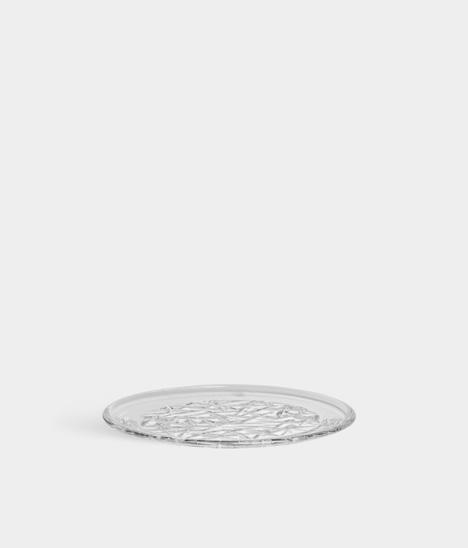





Carat City Stoppers
As a glass designer, Lena Bergström has a clear eye for bottles. Some has an appearance making the content even more valuable, while some bottles miss that extra quality and are therefore placed far back in the bar cabinet. This is the idea of Carat City Stopper – a jewelry that can transform every bottle into a party item. The collection consists of three different glass stoppers, inspired by three different cities. Stockholm, with its straight lines, associates with the square architecture of the city center and the graphic placement of the bricks covering the iconic Sergel Square. New York has similarities to buildings from the 20s and 30s, and the cut triangle facets often visible in Art Deco decor. For Tokyo she found inspiration in minimalistic cherry blossoms and the straight dash eyes seen in Manga. The collection launched in 2009.




City
Design Martti Rytkönen
A small drinking glass can bring a lot to the table. Especially if it’s from Orrefors, which emphasizes the role of the glass in the bar experience. With the City collection, Martti Rytkönen direct the spotlight on a big-city sensibility by pairing crystal clear glass with inspiration from nature in a surprising combination. The play of lines is inspired by the shadows of dry reeds on fresh snow in the bright sun of late winter. The rhythm is distinct and completely organic – as subtly atmospheric for the eye as music is for the ear when played at the perfect volume in a bar. The collection launched in 2016.




63103404
City Old Fashioned
H 87 mm W 78 mm
25 cl
2-pack
6310340
4-pack
63103414
City Double Old Fashioned
H 91 mm W 86 mm
34 cl
2-pack
6310341 4-pack
63103364
City Highball
H 150 mm W 72 mm
37 cl
2-pack
6310342
City Shot
H 85 mm W 40 mm
5 cl
2-pack

Design Martti Rytkönen







Cognac Prestige
Design Orrefors
Cognac Prestige is a glass with the classic shape of a cognac bowl, in a slightly larger scale than usual. It also magnifies the content – as you wrap your hand around the glass, the aroma is elevated by the body heat, the bouquet is concentrated and the flavor develops. The collection by Orrefors launched in 2016.

6310502
Cognac Prestige
H 145 mm W 101 mm D
50 cl
4-pack

When Difference was introduced, it was clear that this new collection had been designed with a fresh, unique perspective for the eyes. Here, the flavor experience is as essential as the enjoyment for the eye and hand. Erika Lagerbielke consulted one of Sweden’s leading sommeliers for help. Together, they explored the relationship between the shape of the glass and the experience of the flavor, aroma and color of the drink inside.
The glasses in the Difference collection are based not on the grape from which the wine is made, but on the characteristics of the drink: Crisp, Fruit, Mature, Primeur, Sparkling or Sweet. This allows conversations over a Difference glass to be less about preconceived notions – and more about what is most important: your wine-tasting experience. The collection launched in 2002.










Elixir Design Orrefors
Elixir by Orrefors was designed in 1969. It is mouth-blown and has the classic shape often preferred by wine tasters, as the combination of a wide middle and narrow top brilliantly brings out the aroma. As Elixir is also relatively small, the glass does not require a large pour of wine in order to best bring out the character of the drink.

Enjoy
Design Erika LagerbielkeEnjoy is a solitary piece created to pair with your favorite glasses. It comes in two sizes with a common aesthetic, but different areas of use. The bigger one, with a spacious body, is an ideal carafe for decanting. Fill it with a bottle of wine, and the surface will just reach the widest point of the carafe. This means the contact surface will be as big as possible, to optimize aeration. The smaller, narrow style is intended for water and other beverages. The collection is designed by Erika Lagerbielke and launched in 2014.



Grace
Design Erika LagerbielkeMed Grace från Orrefors visar Erika Lagerbielke hur också barglas kan få en lätt, närmast graciös karaktär. Väggarna är tunna som på ett vinglas och formade som en klassisk dubbelkon, med en låg midja som passar handens grepp perfekt. Grace finns i tre storlekar: Old Fashioned, Double Old Fashioned och Highball. Fyll dem med klassiska spritdrinkar, eller bjud på samtidens cocktails och aperitifer där fruktjuicer, kombucha, gröna örter och andra alkoholfria ingredienser bildar intressanta smakupplevelser av helt egen kraft. Serien lanserades 2022.



Gin & Tonic
Design Orrefors
Orrefors Gin & Tonic is inspired by Barcelona. Unlike the American tradition, where gin and tonics are served in a highball glass, bartenders in Barcelona often serve this popular drink in a glass with a large bowl. This provides plenty of room for both ice and garnishes, like rosemary or black pepper. The size and shape of the glass are also important for both the aroma and flavor: the bubbles in the drink serve to “transport” the aroma. The large surface of Orrefors Gin & Tonic simply provides space for more bubbles, resulting in an unusually nuanced taste experience. The collection launched in 2018.

Helena
Design Gunnar CyrénHelena Champagne from Orrefors holds 25 cl and has been part of the Orrefors assortment since 1977. The pattern on the trumpet-shaped bowl creates a beautiful optical effect.

6244702
Helena Champagne
H 230 mm W 83 mm
25 cl
4-pack



Informal
Design Björn Dalström
In his first collaboration with Orrefors, Björn Dahlström designed Informal. The collection currently consists of three wine glasses, a tumbler and a carafe, and innovatively unites the beautiful, high-quality glass tradition of Sweden and today’s more informal habits. The seemingly simple shapes are in fact carefully considered down to the last detail. The glasses are a delight to hold and help to bring out the nuances of fragrance and flavor in drinks without placing them front and center. The same elegant balance of form and function is naturally the reason the bowl of the carafe can perform multiple roles. It can be used as a practical coaster for the carafe, or to serve olives or appetizers. The collection launched in 2021.




6402705
Informal Carafe With Bowl Clear

H 263 mm W 33 mm 100 cl
6402706
Informal Carafe With Bowl Olive

H 263 mm W 103 mm 100 cl
6402707
Informal Carafe With Bowl Black

H 263 mm W 103 mm 100 cl
6402701
Informal Champagne
H 195 mm W 62 mm
22 cl
2-pack
6402702
Informal Small Glass
H 160 mm W 74 mm
28 cl
2-pack
6402703
Informal Large Glass
H 175 mm W 80 mm
36 cl
2-pack
6402704
Informal Water Glas
H 85 mm W 73 mm
25 cl
2-pack



Intermezzo
Design Erika LagerbielkeErika Lagerbielke created a classic the year after she graduated from the University of Arts, Crafts & Design (Konstfack) in 1984. At that time, Intermezzo broke away from the colorless aesthetic that had been established in Sweden in the 1950s. Here was someone who wanted to make glass visible and fun, to allow it to be a statement-making element of a table setting. Instead of stepping away from Orrefors’ legacy of beauty and tradition of craftsmanship, Lagerbielke took them both a step further. Intermezzo’s wine glasses, drinking glasses and carafe, which are all still mouth-blown in Småland, were at the time more sensual than what past generations had been able, or dared, to make. And sealed into the glass, rising up from the surface of the table, is a teardrop-shaped mystery. A small, but characteristic detail fascinating enough to inspire a conversation at any time. It has been doing just that for decades –Intermezzo is aesthetic sustainability.









Intermezzo
Design Erika Lagerbielke6257432
Intermezzo Tumbler Blue

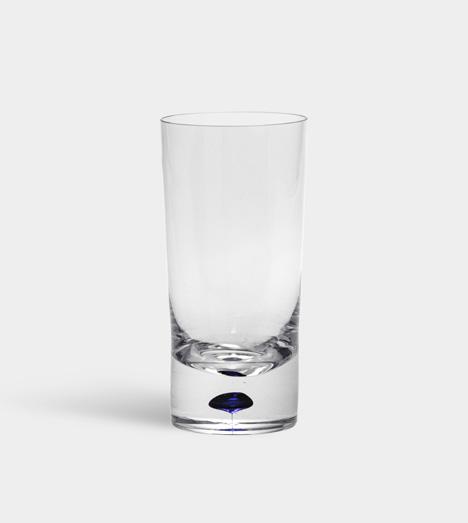


H 110 mm W 68 mm 25 cl
6257440
Intermezzo Old Fashioned Blue
H 90 mm W 82 mm 25 cl
6257441
Intermezzo Double Old Fashioned Blue
H 100 mm W 93 mm 40 cl
6257436
Intermezzo Highball Blue


H 150 mm W 75 mm 40 cl
Intermezzo
H 305 mm W 96 mm D 112 cl
6257403
Intermezzo Coupe Blue
H 153 mm W 97 mm 30 cl
6257455
Intermezzo Martini Blue


H 170 mm W 112 mm 25 cl
6257459
Intermezzo Water Blue
H 195 mm W 84 mm 47 cl
6257485 Decanter Blue
Merlot
Design Erika Lagerbielke
Erika Lagerbielke’s Merlot collection launched in 1995. The goal of Merlot was to offer glasses that elevate the taste experience without specifically being intended for wine connoisseurs. The collection received an Excellent Swedish Design award the very first year. Based on Orrefors’ century of history, Merlot represents classic, finely crafted glass with understated Scandinavian design in the spirit of less is more. This invisible quality may very well mean that your Merlot glasses never need to be recycled –simply use and take pleasure in them over and over, in your own cycle of sustainability.





6274214
Merlot Champagne
H 240 mm W 75 mm 33 cl
6274216
Merlot
H 188 mm W 75 mm 32 cl
6274218
Merlot Wine
H 210 mm W 87 mm
45 cl

6274220
Merlot Wine
H 220 mm W 95 mm 57 cl
6274234
H 115 mm W 75 mm 27 cl
6274259
H 180 mm W 93 mm
60 cl
Merlot Tumbler White Wine Merlot Ice Beverage
Metropol
Design Erika Lagerbielke





With austere, elegant Metropol, Erika Lagerbielke continues in her own footsteps, from her breakthrough with Intermezzo and into the future. It has the same sense of mystery that we know from Intermezzo, the sealed drop of color, but paired with another approach to color and style. The straight lines, like the name Metropol, call modern city living to mind. The collection includes glasses for champagne, red and white wine and beer. There is also a coupe, tumbler and a carafe which works equally well for water and wine. The collection launched in 2017.


More began as a collection for restaurants. By interviewing restaurateurs about everything from form to sustainability, Erika Lagerbielke was able to design a collection equally appreciated at renowned restaurants, dinner parties and family meals. All pieces in the Orrefors More collection – from the wine glasses and snaps glasses to the versatile, all-purpose tumbler – share Lagerbielke’s ability to combine the chic elegance of glass with a sense of how people want to meet, eat and drink today: in a relaxed, inclusive and pleasant setting. The collection launched in 2013.




6310108
More Champagne
H 215 mm W 68 mm
18 cl
2-pack
6310109
More Wine
H 215 mm W 84 mm
44 cl
6310110
More Multi Tumbler
H 117 mm W 84 mm
6310140
More Coupe
H 150 mm W 99 mm
21 cl
2-pack

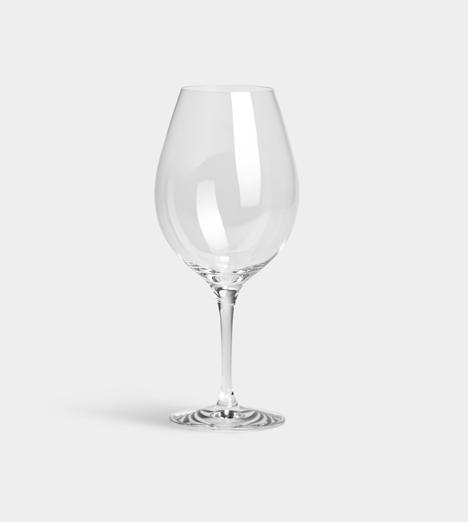

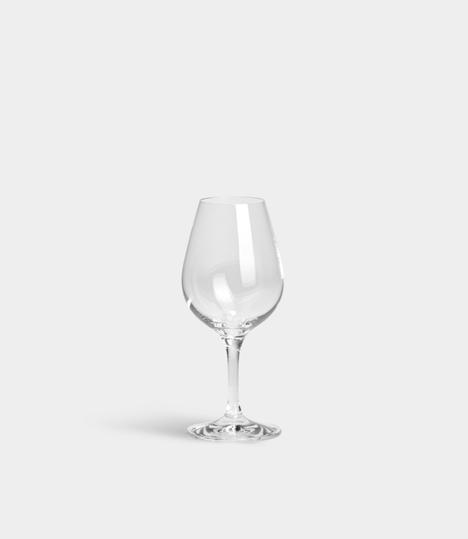





Snaps Devil
Gunnar Cyrén is one of the great designers of Swedish glass history. In 1991, he created this set, which is still used at the annual Nobel Banquet in Stockholm City Hall – an unparalleled gala where invited award winners from around the world celebrate with over 1,000 guests, including members of the Swedish royal family, prestigious politicians, scientists and artists. The collection, which is mouth-blown in Sweden and hand-painted with details in real 22-karat gold, includes wine glasses, beer glasses, champagne glasses, a pitcher and a carafe. The entire Nobel set is now a highly coveted collectors’ item, both in Sweden and internationally.


6267901
Nobel Snaps Red H 162 mm W 41 mm
4 cl
6267903
Nobel Snaps Black H 162 mm W 41 mm
4 cl
6267904
Nobel Snaps Blue H 162 mm W 41 mm
4 cl
6267907
Nobel Snaps Gold
H 162 mm W 41 mm
4 cl
6267908
Nobel Snaps Silver H 162 mm W 41 mm
4 cl
6267910
Nobel Snaps White H 162 mm W 41 mm
4 cl



 Design Gunnar Cyrén
Design Gunnar Cyrén

Peak
Martti Rytkönen has an inescapable relationship to nature. In the Peak barware collection from Orrefors, he pairs the magnificent authority of mountain tops with the ability of cut glass to beautifully refract the soft rays of light that make a bar a bar. The collection includes Old Fashioned glasses in two sizes, a Highball glass, and coasters and straws in classic warm-toned metal. The collection launched in 2018.


6311175
Peak Coasters Incl. Holder H 3 mm W 100 mm

4-pack
6311166
Peak Straw Incl. Cleaning Brush H 210 mm W 6 mm

4-pack
6311140
Peak Old Fashioned H 87 mm W 78 mm
25 cl
4-pack
6311141
Peak Double Old Fashioned H 91 mm W 86 mm

34 cl
4-pack
6311136
Peak Highball H 150 mm W 72 mm
37 cl
4-pack
Design Martti Rytkönen


Pulse
Design Ingegerd Råman
Pulse from Orrefors is for all the senses, elevating the full potential of the drink without sacrificing the character or balance of the glass. Timeless design and excellent function are combined with playfulness and contemporary demands. Designed by Ingegerd Råman in 2013.



Sense
Design Orrefors
The idea for an all-purpose glass for sparkling wine and other sparkling drinks lies behind Orrefors Sense. The classic tulip shape brings out the aromas and flavors of the drink, and the curved middle comes to a tall conclusion, with a subtle arch to add contemporary character. Sense, which launched in 2015, is made of the highest quality crystal.

6220103
Sense Sparkling
H 214 mm W 72 mm
25.5 cl
6-pack
Share
Törnell
With the all-purpose Share Carafe, Pia Törnell combines modern elegance with a classic touch. It is stable yet sleek, with a comfortable neck to hold and a pour-friendly spout. The idea is for Share to be equally suitable for water and juice as it is to aerate and serve wine. Seemly enough, the smaller style is perfect for a half bottle of wine, and the bigger one for a full bottle. The collection from Orrefors launched in 2019.



Sofiero
With Sofiero, Gunnar Cyrén created a lasting Scandinavian glass classic. The collection consists of bowls, a vase, a barware set of glasses in three models, and a decanter. Sofiero is characterized by its signature deep-cut pattern, which rises all the way to the edge of the vase and bowls, for an appearance reminiscent of a royal crown. Today, Sofiero’s status as a classic is reinforced by its connection to the “For Zealous and Devoted Service of the Realm” award, in which people who have worked for the Swedish government for over 30 years can be awarded with an engraved Orrefors Sofiero bowl. The collection launched in 1960.



 Design Gunnar Cyrén
6383440 Sofiero Old Fashioned H 85 mm W 75 mm 25 cl
6383444 4-pack
6383441 Sofiero Double Old Fashioned H 95 mm W 84 mm 35 cl
6383436 Sofiero Highball H 145 mm W 74 mm 41 cl
6383481 Sofiero Decanter H 245 mm W 125 mm 75 cl
Design Gunnar Cyrén
6383440 Sofiero Old Fashioned H 85 mm W 75 mm 25 cl
6383444 4-pack
6383441 Sofiero Double Old Fashioned H 95 mm W 84 mm 35 cl
6383436 Sofiero Highball H 145 mm W 74 mm 41 cl
6383481 Sofiero Decanter H 245 mm W 125 mm 75 cl

Street
Design Jan Johansson
Manhattan is home to an enormous number of bars. Having a drink at rooftop bars, fine restaurants and neighborhood pubs has always been a natural part of life in the city. With the Street barware collection, Jan Johansson has merged Orrefors’ Scandinavian design tradition with inspiration from New York’s worldfamous grid system of streets and avenues. The crisp purity of crystal permeates each glass, including options for champagne to cognac and – naturally – a dry martini. In addition, Street includes a decanter and ice bucket with black details to provide contrast against the clear glass. The collection launched in 2006.






Martini

6540197 Street Ice Bucket H 150 mm W 135 mm




The Sparkling Devil
After Gunnar Cyrén passed away in 2013, the designer’s sons went through the sketches he left behind. They found numerous sketches of a champagne glass inspired by the ”Snaps Devil” glass. The champagne glass, called Sparkling Devil, went into production and is now part of the Orrefors assortment. The product is mouth-blown in Sweden and each glass is hand-painted with details in real 22-karat gold. The collection is available in several colorways and a unique new variation will be added annually until the collection is complete.

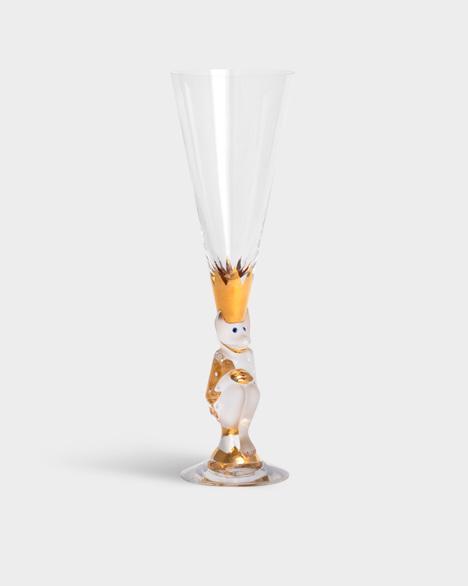




6267945 New
The Sparkling Devil Purple H 230 mm W 69 mm 19 cl
6267940
The Sparkling Devil Clear H 230 mm W 69 mm 19 cl
6267941
The Sparkling Devil Dark Grey H 230 mm W 69 mm 19 cl
6267942
The Sparkling Devil Blue H 230 mm W 69 mm 19 cl
6267943
The Sparkling Devil Green H 230 mm W 69 mm 19 cl
6267944
The Sparkling Devil White H 230 mm W 69 mm 19 cl
Design Gunnar CyrénInterior

Carat
With Orrefors´ collection Carat, Lena Bergström diverges from the traditional ideals of cut glass. Instead, she has carved out a contemporary style in which chaos and order unite to elevate the most beautiful aspects of both. This broad collection includes everything from vases, candlesticks and votives to a bowl, plate, small plate and stemware glasses. Some products with details in metal. The collection launched in 2009.



6590120
Carat Globe Vase Small H 108 mm W 130 mm

6590133
Carat Globe Vase XL H 250 mm W 305 mm
6590125
Carat Globe Vase Large H 168 mm W 204 mm
6590131
Carat Cylinder Vase Lower Cut H 370 mm W 140 mm
6590132
Carat Cylinder Vase Upper Cut H 370 mm W 140 mm
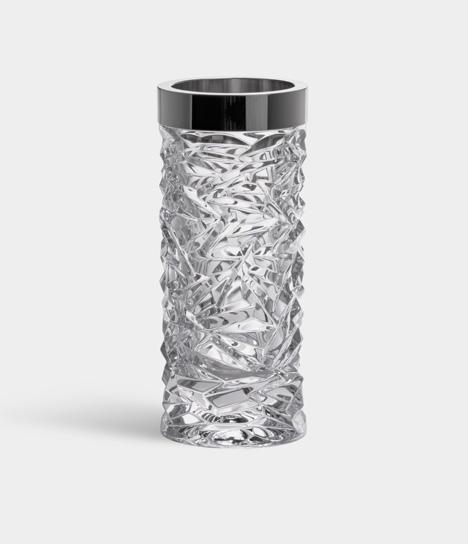
6590124
Carat Vase H 240 mm W 101 mm
 Design Lena Bergström
Design Lena Bergström




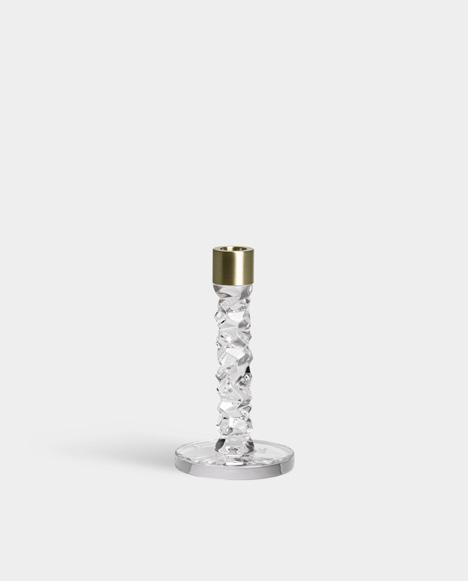

Carat
Design Lena Bergström
6590173 New
Carat Candlestick Antracite
H 183 mm W 100 mm
6590162
Carat Candlestick
H 242 mm W 100 mm
2-pack
6590166
Carat Candlestick Bras
H 242 mm W 100 mm
2-pack
6590170
Carat Candlestick Antracite
H 242 mm W 100 mm
2-pack
6590112
Carat Bowl

H 76 mm W 216 mm
6590165
Carat Candlestick






H 297 mm W 108 mm
6590168
Carat Candlestick Bras
H 297 mm W 108 mm
6590174 New
Carat Candlestick Antracite
H 297 mm W 108 mm



Discus Design Orrefors
Discus brings out the essence of crystal. The thick shape underscores the weight of the material, while the subtle pattern on the underside refracts the candle’s glow, making it sparkle around each candle holder like moving reflections on the water surface. Discus is available in two sizes. The collection, which is designed by Lars Hellsten, launched in 1995.

 6483162 Discus Clear H 45 mm W 140 mm
6483162 Discus Clear H 45 mm W 140 mm
Raspberry
Raspberry is a collection of clear crystal bowls, vases, votive candle holders and a plate from Orrefors. The round balls resemble a raspberry and lend to a soft design. Designed by Anne Nilsson in 1992.





6475774 Raspberry Plate H 60 mm W 390 mm
6101500 Raspberry Vase H 160 mm W 124 mm
6101501 Raspberry Vase H 200 mm W 155 mm

 Design Anne Nilsson
6475761 Hallon Votive H 55 mm W 92 mm
6475712 Hallon Bowl H 75 mm W 190 mm
6475762 Hallon Votive H 69 mm W 110 mm
6475713 Hallon Bowl H 100 mm W 205 mm
Design Anne Nilsson
6475761 Hallon Votive H 55 mm W 92 mm
6475712 Hallon Bowl H 75 mm W 190 mm
6475762 Hallon Votive H 69 mm W 110 mm
6475713 Hallon Bowl H 100 mm W 205 mm
Ice Cube
Design Göran WärffGöran Wärff, som vanligtvis formger åt Kosta Boda, har skapat en stilren ljuslykta till Orrefors sortimentet. Fin både ensam och i grupp.
Göran Wärff, who usually designs for Kosta Boda, has created a stylish votive for the Orrefors range. Nice both by itself and in a group.
6521862
Ice Cube Votive
H 65 mm W 70 mm

Legend
Design Orrefors
The Legend series is based on the grinding technology developed by Orrefors during the first half of the 20th century. Here it is deep sanding grooves that in combination with a tight modern pattern give the clear character. In the strong crystal material, facets are formed that beautifully refract the light. The bowls in Legend are available in two sizes, both stylish enough to just look at and of course perfect for snacks and pick-me-up food.

 6320111
Legend Square Bowl H 75 mm W 110 mm
6320113
Legend Square Bowl H 110 mm W 155 mm
6320111
Legend Square Bowl H 75 mm W 110 mm
6320113
Legend Square Bowl H 110 mm W 155 mm

Light Switch
Design Orrefors
Who has not wanted to put a candle in their favorite votive? Light Switch is a small ring of aluminum, a light adapter, which easily turns your votive into a candlestick.




Orrefors Pluto is mouth-blown and unmistakably Scandinavian. With just a floating spherical shape, subdued colors and a metal culmination, Lena Bergström has designed a vase and candlestick with a soft and minimalist yet striking character. The name is a tribute to Pluto – the heavenly body that was given a new astronomical classification in 2006, and is now categorized as a dwarf planet, rather than a planet. The collection launched in 2018.
 6350022 Pluto Vase Clear H 190 mm W 235 mm
6350062 Pluto Candlestick Clear H 124 mm W 166 mm
6350162 Pluto Candlestick Blue H 124 mm W 166 mm
6350022 Pluto Vase Clear H 190 mm W 235 mm
6350062 Pluto Candlestick Clear H 124 mm W 166 mm
6350162 Pluto Candlestick Blue H 124 mm W 166 mm
Precious
Design Malin Lindahl
Like precious treasures, Malin Lindahl’s vases, bowls and votive candle holders add beauty to the contemporary home. Shimmering, asymmetrical facets beautifully refract the light reflected in the crystal glass. Precious from Orrefors launched in 2009.



 6569223 Precious Vase H 235 mm W 174 mm
6569262 Precious Votive H 60 mm W 119 mm
6569221 Precious Vase H 190 mm W 148 mm
6569223 Precious Vase H 235 mm W 174 mm
6569262 Precious Votive H 60 mm W 119 mm
6569221 Precious Vase H 190 mm W 148 mm
Puck
Design Lena Bergström
With Puck, Lena Bergström connects pure crystal’s similarities to ice. Her inspiration comes from childhood fishing trips to frozen lakes in the mountains. The size of the candleholder may be directly inspired by the association with the diameter of an ice drill, and the incredible precision with which it drilled through thick, frozen-solid ice. Puck comes in two styles – one tall and one short. The collection launched in 1999.





Sofiero
With Sofiero, Gunnar Cyrén created a lasting Scandinavian glass classic. The collection consists of bowls, a vase, a barware set of glasses in three models, and a decanter. Sofiero is characterized by its signature deep-cut pattern, which rises all the way to the edge of the vase and bowls, for an appearance reminiscent of a royal crown. Today, Sofiero’s status as a classic is reinforced by its connection to the “For Zealous and Devoted Service of the Realm” award, in which people who have worked for the Swedish government for over 30 years can be awarded with an engraved Orrefors Sofiero bowl. The collection launched in 1960.




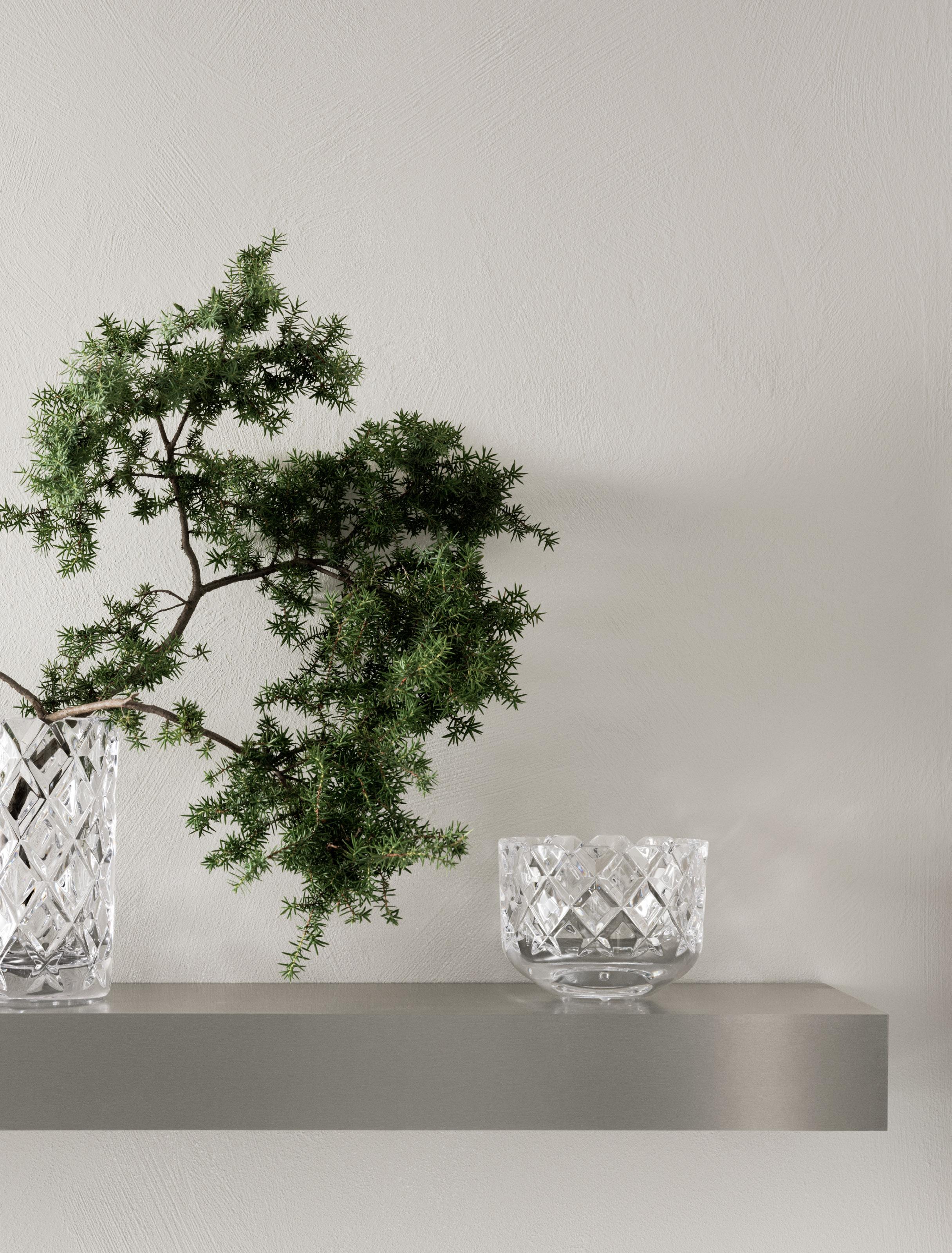

Squeeze
Like many other innovations, the idea for Squeeze arose by chance. While working on another shape entirely, Lena Bergström lost control of the heated, viscous glass, and the result was an asymmetrical inward bend. Inspired by her mistake, she made Squeeze, in which the shape has been intentionally reproduced. The “squeezed” indentations interrupt the symmetry, while simultaneously serving a clear function: flowers placed inside are neatly held together rather than spread out, even those with only a few stems. The collection first launched in 1997 and then relaunched in 2020.







Valentino
Design Orrefors

Valentino is a convergence of hard and soft elements. This thick, crystal-clear glass is shaped like a heartthe universal symbol of care, warmth and love. By also giving the heart a bulging shape, Martti Rytkönen has made the glass almost appear to be pulsating. The votive candle holder has a round hole, allowing the candle to sink down just until the flame is visible through the glass, but still reaching up over the edge. The manufacturing technique of the bowl gives the inner edges a gently rounded look. Fill it with classic love letters written on paper, or with a little water and a few roses floating on the surface. The collection launched in 2010.
6530562
Valentino Votive
H 68 mm W 107 mm

